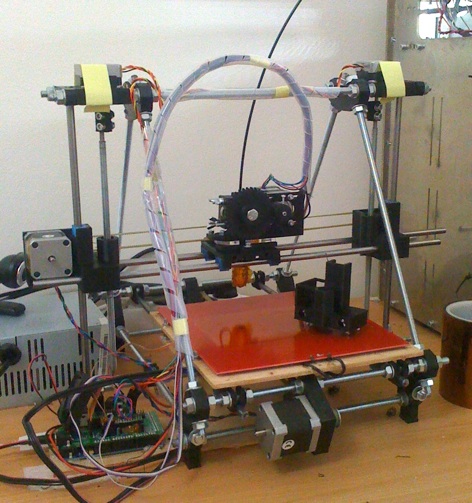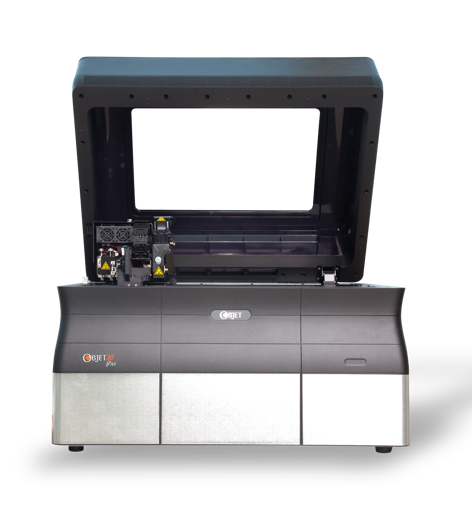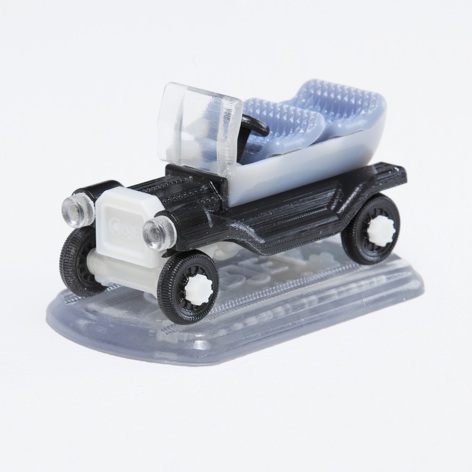A new breed of entrepreneurs - hidden away in bedrooms, basements and garages - are about to unleash their talent on the rest of the world. The movement, which has rapidly gained momentum over the past few years, could see manufacturing shift away from mass production towards a model of ‘mass customisation’.
The emergence of these innovators has been fuelled by 3D printing, a technique that builds up solid objects layer by layer. The technology, also known as additive manufacturing, has been used in industry since the 1980s. Back then it was the preserve of large engineering companies, mainly in the aerospace and motorsport sectors, with a typical machine costing anything between $100,000 to $1m.
The high costs were partly due to the patents held on the machines. ‘What is really interesting is, over the past few years, we are seeing a lot of the patents expiring and becoming available to entrepreneurs,’ said Andrew Sissons, a researcher at Lancaster University’s Big Innovation Centre. ‘It’s not necessarily the inventors of the technology who are the ones to take it forward. We are about to see an explosion where 3D printers will be used not just in factories but in shops and in the home.’
Adrian Bowyer, a retired lecturer from Bath University and founder of the RepRap (replicating rapid-prototyper) project, has been a major driver in bringing 3D printing to the masses. In 2005, Bowyer had the idea of creating a 3D printer that could print parts to replicate itself. He achieved this in 2008 and made the files open source, allowing anyone to build their own printer for around £300. Since then, thousands of people have downloaded, modified and improved his designs.

There are currently over 2,500 RepRap machines throughout the world. The project means anyone with a good idea can produce a printer and later a design for a fraction of the cost. The technique frees designers from the constraints of traditional manufacturing processes, allowing them to create intricate geometries with very little waste. The method varies among 3D printers but in general, starts with software- most of which is now free online- to create an STL file.
The STL file divides the design into triangular facets, allowing the machine to read the designs. The machine then deposits successive layers of material which can either be in liquid, powder or sheet form. The layers are jointed together automatically to create the final design, corresponding to the initial computer model. Some of the more common techniques include fused deposition modelling (FDM), selective laser melting (SLM) and multi-jet modelling (MJM). All have in common the ability to manufacture customised products for a fraction of the cost anywhere in the world.

3D Print UK, a company set up last year by Nick Allen, allows entrepreneurs to send their STL files in to be created by his machine. He notes that there has been a spike activity from DIY designers who have been inspired by tools such as Thingiverse, a site where people upload and share their designs. ‘Every project I receive is completely different,’ he said. ‘Everything and anything has come through. I’ve had stuff from 12 year old boys who’ve designed something on Google SketchUp in their bedrooms, to Bugatti, to lots of intermediate designers who are creating small products like iPhone cases.’

Allen believes the technology’s strength will remain in the creation of prototypes, but others in the industry are more optimistic. A growing number of companies are using these improvements to produce end products, a process known as direct digital manufacturing (DDM). According to industry consultant Terry Wohlers, currently around 28 per cent of money spent on the 3D printing technology is on printing final products. He believes this will rise to over 50 per cent by 2016 and more than 80 per cent by 2020.
With improvements in materials and processes, the speed of development for DDM has been rapid. Last month Warwick University announced that it had developed a material called carbomorph that could be used within 3D printers. The group was able to build a functional computer game controller made entirely from carbomorph by laying down electronic tracks and sensors as part of the 3D structure. Meanwhile, scientists at the Wake Forest Institute for Regenerative Medicine have created a hybrid 3D printer that can create implantable human cartilage. Another group, at Southampton University, has a printed unmanned aircraft from laser-sintered nylon.
Bowyer’s daughter, Sally, has followed in her father’s footsteps as director of RepRapPro. She is impressed by commercial achievements in the field but believes, with improved materials and DDM capabilities, the future of 3D printing is with DIY designers in the home. ‘I’ve grown up with 3D printers around the house and for me it seems silly that people wouldn’t have one,’ she said. ‘My mum hates it because our house is held together with bits of plastic. Whenever anything breaks, my Dad says I’ll just design a new part and print it out. There are real practical uses.’
According to Sissons, policymakers still need to be convinced about its economic benefits. ‘Britain is a leader in online retail and renowned for its design engineering,’ he said. ‘The country is in a good position to take things forward if we can support innovators in 3D printing. Government shouldn’t be taking any chances. The question is, when will 3D printing hit that point when it is a competitor to mass production?’




Glasgow trial explores AR cues for autonomous road safety
They've ploughed into a few vulnerable road users in the past. Making that less likely will make it spectacularly easy to stop the traffic for...